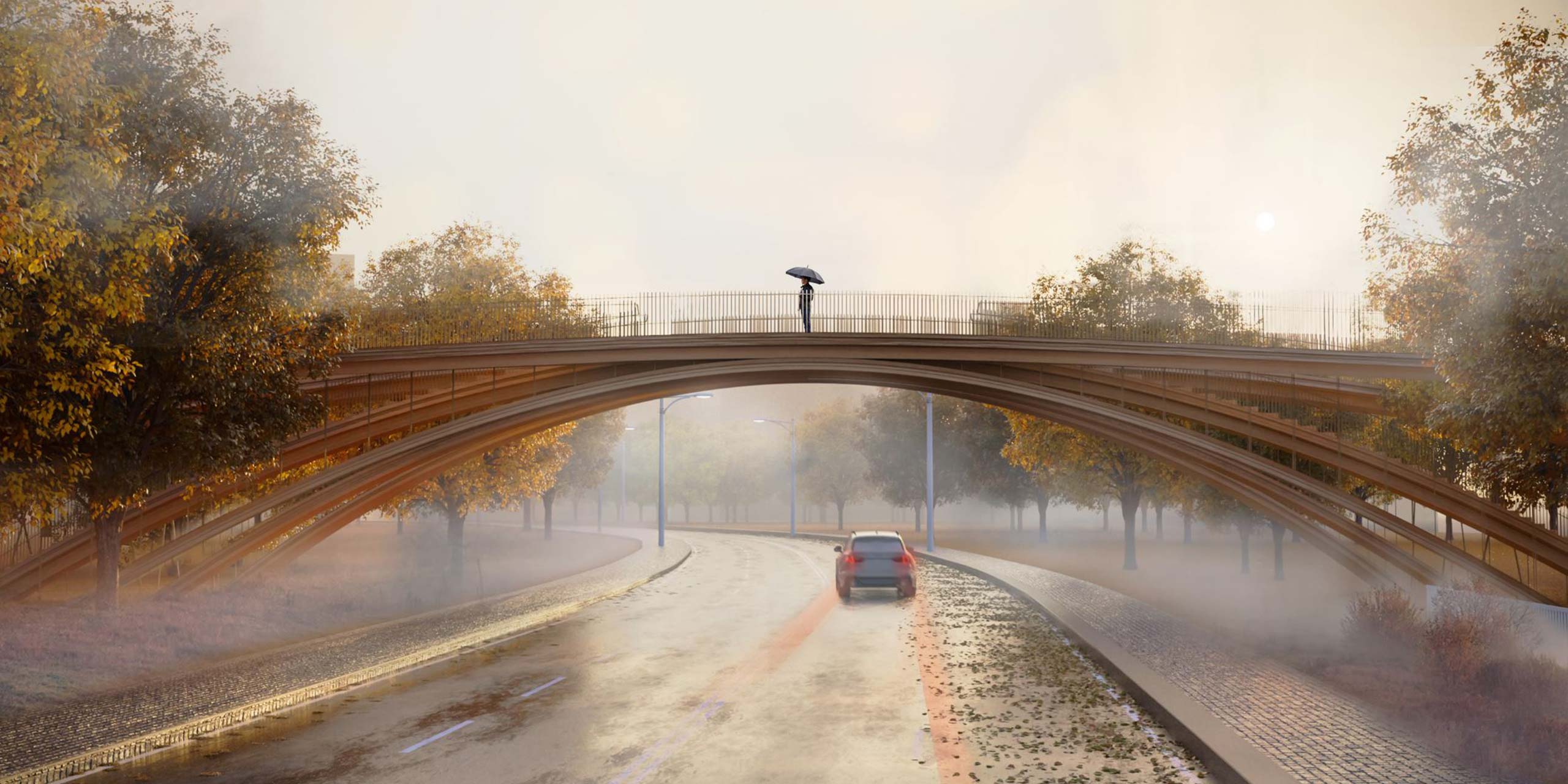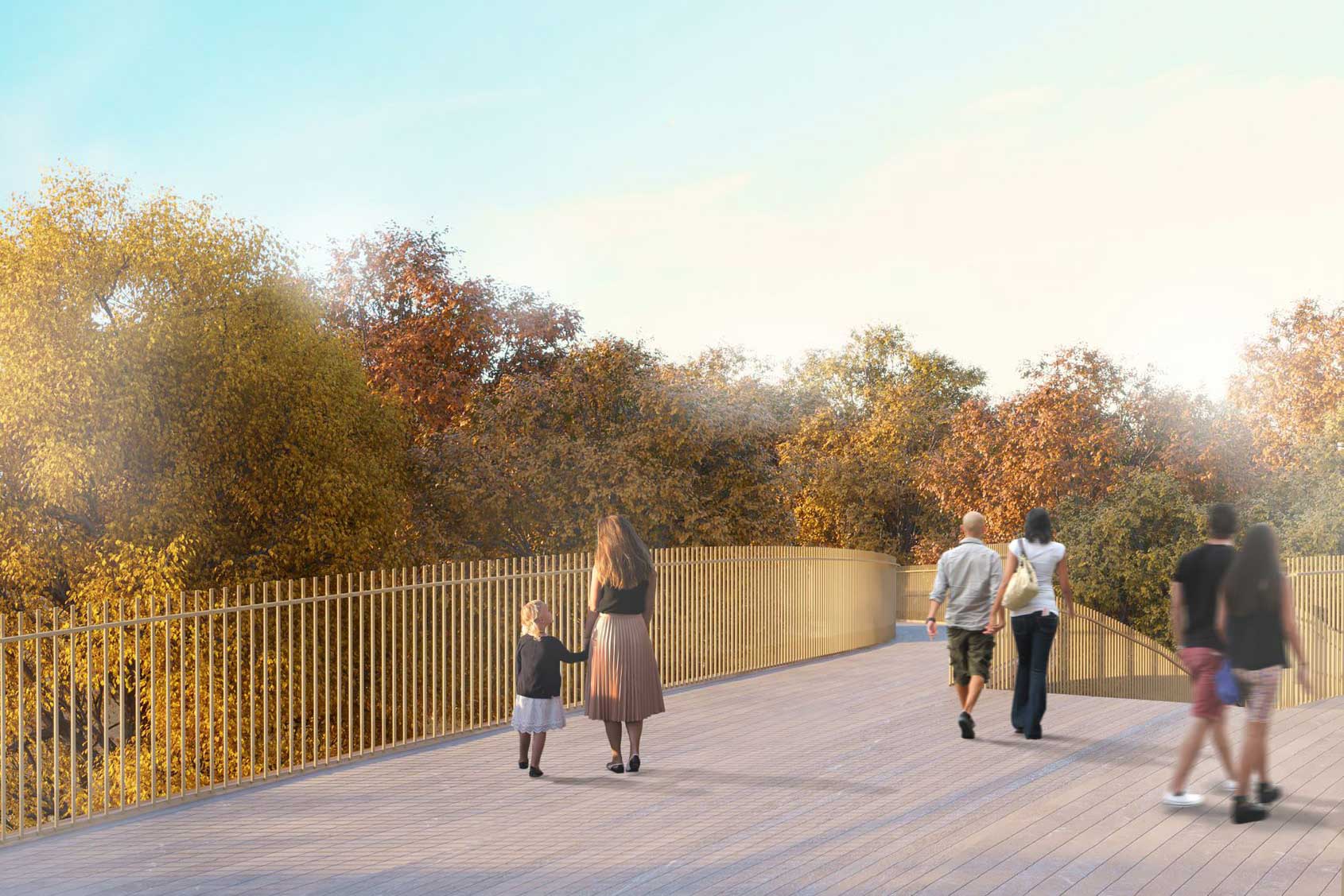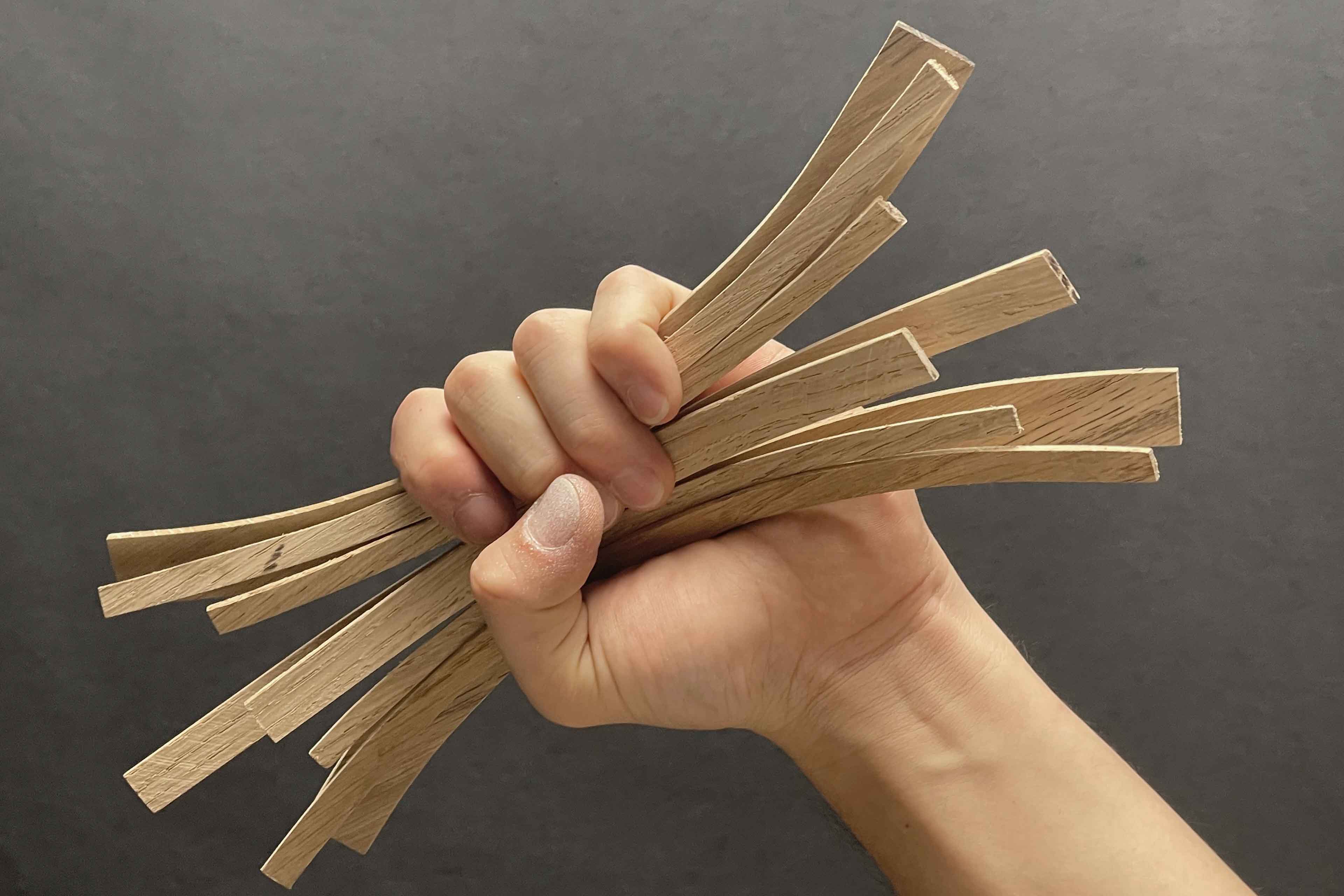
The bridge reaches its apex over the center of Byala Cherkva Street
South Park is a predominant urban corridor that connects the iconic Vitosha Mountains with the city’s historical center in Sofia, Bulgaria. The park covers an area of 1.5km, filled with a broad range of retail, cultural, and play spaces, making it a popular destination for locals and tourists.
RIOS participated in the open competition to design a pedestrian bridge passing over Byala Cherkva Street in Ivan Vazov district, which will form a new connection between South Park Part II and South Park Part III. The existing configuration of the park presents challenges, including navigating narrow sidewalks and street crossings as the park is sliced into two separate areas by a busy road.

Sofia Bridge Proposed Site Plan
Our vision for a new bridge in South Park, Sofia, Bulgaria, is guided by five principles:
Our design involves a deep understanding of the existing park to propose a series of new pathways that weave seamlessly for a better navigation and circulation experience.
A slender bridge enables the design to weave between existing trees, providing a design that is harmonious with nature. The foundations minimize the impact on tree roots, and the botanical collection expands with native trees and species, boosting the park’s ecosystem and providing a dynamic new place within Sofia Park.
Walking pathways weave between the canopies, offering a new experience within the park. This closer commune with the tree canopy provides visitors with a closer connection to nature.
Our innovative bridge design creates a slender form and structure using the latest timber technology. Timber bridges are an increasingly popular solution for footbridges, offering an affordable and lightweight solution. This lightweight construction allows for a straightforward build process, small carbon footprint, and the structural possibilities of a sleek design.
In order to achieve the required clear height over the road, a series of long ramps would provide access for all. Our proposal celebrates these ramps as an essential design component, connecting the two sides of the park and facilitating the intimate relationship with nature.

View at the top of the bridge

View at the top of the bridge

Study Model showing the elegant timber arches passing past the existing tree canopy and offering a new perspective of the park

The architectural and structural expression of the bridge finds inspiration from a collection of sticks picked up from the forest floor and collected into a bundle. The strength and structural stability of the bridge relies on these small individual elements all working together to elegantly arch over the road and form the structural base of the bridge.
Glulam timber structures offer a cost effective and sustainable model for pedestrian bridges. Glulam construction costs 25% to 50% less than conventional bridges, and its comparatively low weight allows the pieces to be transported and installed easily.

Our study model shows the elegant timber arches passing through the existing tree canopy to offer a new perspective of the park. The bridge design is inspired by the traditions of Bulgarian timber craftsmanship, and designed to have the elegance of a finely crafted piece of timber furniture.
Wooden bridges are ideal for pedestrian and cycle traffic. It is low-weight compared to concrete, and offers a sleek, narrow design.

Aerial of the proposed Sofia Bridge
The structural design gives the bridge a slender profile when approached by car, with the structure reducing to under 1m thick at this pivotal moment. Structurally, the design uses a reinforced concrete plinth foundation at the landing point of each arch. The merging of the multiple pathways and stairs on the bridge allows space for moments of reflection and appreciation of the city of Sofia.

Long sections through the staircases and structural arches provide 5m of clear height underneath the entirety of the bridge

Plan view showing the merging of the multiple pathways and stairs on the bridge

Bridge in the winter showing the elegant timber structure traversing the road
